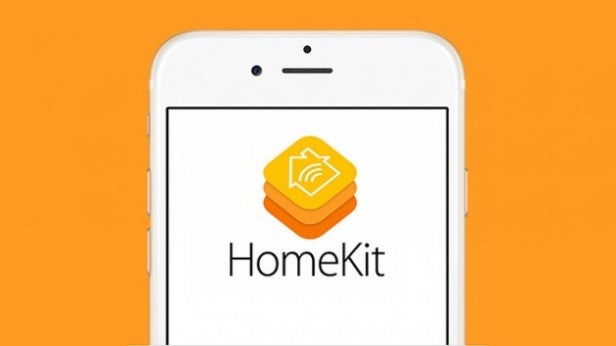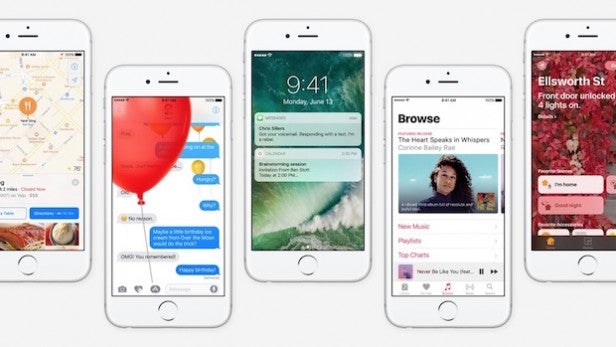Apple will save the smart home dream from itself

OPINION: Chris Smith on why he trusts Apple to right the ship and fulfil the smart home prophecy with Home and HomeKit in iOS 10.
Smart home tech has become more hassle than it’s worth.
Rather than making life unequivocally simpler, you can often spend more time repeating voice commands, dealing with connectivity issues, fiddling with different apps and working too hard to overcome incompatibility issues.
It was supposed to bring us closer to a sci-fi-like utopia, where light switches look as out of place as Donald Trump in a presidential election. Instead, it’s complicated, it’s convoluted and, with so many competing standards, a minefield for every day consumers who don’t consider themselves tech experts.
As such, three years after the first Wi-Fi light bulbs became available, smart home tech is still the preserve of the early adopter. And, given my own experiences so far, I’ve found it’s mostly easier just to get up and turn off the lights and lock the door myself.
Related: Cortana vs Google Now vs Siri: Which is best?

The smart home era is in danger of being buried under its own complications, but thankfully Apple is just the company to rescue it.
At WWDC the firm finally upped its game by launching a gorgeous, well-integrated, consumer-facing Home app for its HomeKit platform.
The app, baked in and given real prominence within iOS 10 is exactly what the smart home sector needs.
Through the years there have been numerous examples of industries rallying behind Apple’s banner and the same thing will happen here. Apple also has a history of taking things out of the realm of the enthusiast and making it user-friendly for everyday iPhone users. That’s also what’ll happen here.
Related: Smart lightbulbs explained

Third-party manufacturers and developers clamour to build for Apple products above all else, just look at the densely populated App Store, AirPlay, and the Made for iPhone ecosystems.
If Apple truly commits to making Home an integral part of iOS 10 – and a place in the Command Centre suggests that’ll absolutely be the case – then we know there’ll be so many more HomeKit-compatible gadgets on the way, creating a much more vivid ecosystem and fewer concerns about compatibility for iOS owners.
The Apple TV too, could be a vital tool. Recent rumours have suggested Apple will match Amazon and Google efforts with a Siri Remote-based upgrade that’ll act as the smart home hub.
OPINION: Google Home and Assisstant can kick Amazon and Apple to the curb

If anything, it’s amazing it took Apple so long to get to this point. HomeKit was first announced more than two years ago prior to the launch of iOS 8, so it’s been a very slow burn indeed.
I’ll admit, until very recently, I had no idea how Apple’s HomeKit framework really worked. Sure, I knew it could connect smart home accessories and control them via Siri, but the nuts and bolts had eluded me.
Can you blame me? The only reference to the smart home platform within iOS 9 is tiny menu buried within the settings, which has offered no means of connecting devices or controlling them.
Effectively. HomeKit has been a platform with no app that requires an app to connect products that also require apps. That’s about as ungainly and un-Apple-like as it gets.
Thankfully though, the Home app that should have shipped with iOS 8 and 9 is here within iOS 10 and the path forward is clearer.
RELATED: iOS 10: Everything you need to know
Let’s not get too carried away though. This doesn’t complete the puzzle. Many of the frustrations that span the entire smart home movement right now will not go away with the launch of home.
For example, I have a bunch of CREE smart light bulbs controlled through Amazon Echo via a Wink Hub. Half the time it feels like Amazon Alexa doesn’t hear or understand my request so I end up walking towards the speaker to repeat. The rest of the time my wife is still using the wall switches rendering my tap or voice commands useless (and it forces the lights offline too. Bad-dum, tish!).
The Wink Relay, which is a touchscreen-based interface for smart home tech, requires hard-wiring into the light box, something rendered impossible by shoddy previous electrical work and the fact I’m not an electrician. The Schlage Touchscreen Deadbolt I was sent would be an amazing addition if I didn’t need a new front door to install it. Apple can’t solve those inherent issues with making a home fully smart.
It can’t do anything about internet or power outages rendering the whole damn thing useless.
 The Amazon Echo
The Amazon Echo
It’s also likely that smart home accessory makers will still require their own apps to be installed and accounts to be set up before they can be linked to Home. A real pain in the arse.
The issues of competing standards and incompatibility will not go away, but at least with more companies likely to support multiple standards including HomeKit, SmartThings, Z-Wave, Alexa Skills API, Zig-Bee and the rest, they should be lessened somewhat.
Apple certainly cannot correct all of the early missteps of this era, but it’s support and commitment can help to save the smart home dream from itself.
VIDEO: What’s the best iPhone?
What do you think about Apple’s smart home ambitions? Let us know in the comments.


